Proscar
2018, University of Findlay, Bozep's review: "Proscar 5 mg. Only $0,88 per pill. Best Proscar online OTC.".
Although this distinction can be difficult to make cheap proscar 5 mg with visa, depressive features that appear particularly characteristic of borderline personality disorder are emptiness, self-condemnation, abandon- ment fears, hopelessness, self-destructiveness, and repeated suicidal gestures (91, 92). Depres- sive features that appear to be due to borderline personality disorder may respond to treatment approaches described in this practice guideline. The pres- ence of substance use has major implications for treatment, since patients with borderline per- sonality disorder who abuse substances generally have a poor outcome and are at greatly higher risk for suicide and for death or injury resulting from accidents. Persons with borderline per- sonality disorder often abuse substances in an impulsive fashion that contributes to lowering the threshold for other self-destructive behavior such as body mutilation, sexual promiscuity, or provocative behavior that incites assault (including homicidal assault). Patients with borderline personality disorder who abuse substances are seldom candid and forthcoming about the nature and extent of their abuse, especially in the early phases of thera- py. For this reason, therapists should inquire specifically about substance abuse at the beginning of treatment and educate patients about the risks involved. Vigorous treatment of any substance use disorder is essential in working with patients with borderline personality disorder (87). Depending on the severity of the alcohol abuse, if out- patient treatment is ineffective, inpatient treatment may be needed for detoxification and par- ticipation in various alcohol-treatment interventions. Participation in Alcoholics Anonymous is often helpful on both an inpatient and an outpatient basis. Clinical experience suggests that the use of disulfiram may occasionally be helpful as adjunctive treatment for patients with bor- derline personality disorder who use alcohol, but it must be used with caution because of the risk of impulsivity or nonadherence. However, they require diligent patient adherence, and there is little empirical support for the effectiveness of this approach for addiction. However, except perhaps for mild marijuana use, psychotherapy alone is generally ineffective for treating substance use disorders. Violence may take such forms as hurling objects at family members—or at therapists—during moments of intense anger or frustration. Some patients with border- line personality disorder are physically abusive toward their children. Therapeutic strategies optimal for dealing with antisocial features vary, depending on the severity of these features, and range from minor interventions to broader and more complex strategies suitable for a clinical picture in which antisociality is a major factor. This becomes in effect a psychoeducative approach in which the patient is helped to understand the advantages, in the long term, of socially appropriate al- ternatives (93). When more severe antisocial features are present, residential treatment may be indicated. This may take the form of the “therapeutic community” as described by Losel (94) and by Dolan et al. When antisocial features are even more severe and become dominant, and when the threat of violence is imminent, psychotherapy of any type may prove ineffective. In this situation hos- pitalization (involuntary, if necessary) may be required to help the patient regain control and, in cases in which a specific threat has been communicated by the patient, to reduce the risk to the potential victim(s). Clinicians should be aware that some patients with borderline personality disorder with antisocial comorbidity may not be good candidates for therapy. This is especially true when the clinical picture is dominated by psychopathic traits (as described by Hare [97]) of the intensely narcissistic type: grandiosity, conning, lack of remorse, lying, and manipulativeness. Similarly, when underlying motives of jealousy or of revenge are of extreme intensity, therapy may prove ineffective (93). This behavior is thought to reflect the difficulties patients with borderline personality disorder have with modulation and con- tainment of intense emotions or impulses. Some clinicians who are expert in the treatment of borderline personality disorder (4, 17) suggest that the psychotherapist should approach each session with a hierarchy of priorities in mind (as exhibited in Figure 1). In other words, suicidal and self-destructive behaviors would be addressed as the highest priorities, with an effort to evaluate the patient’s risk for these behaviors and help the patient find ways to maintain safety. Alternatives to self-mutilation, for example, can be considered (12, 17), and insights might be offered about the meaning of self-defeating behavior. Most experts agree that some type of limit-setting is necessary at times in the treatment of patients with borderline personality disorder. Because patients engage in so many self-destruc- tive and self-defeating behaviors, clinicians may find themselves spending a great deal of the therapy setting limits on the patient’s behaviors. The risk in these situations is that therapists may become entrenched in a countertransference posture of policing the patient’s behavior to the point that treatment goals are lost and the therapeutic alliance is compromised. Waldinger (18) has suggested that limit-setting should be targeted at a subgroup of behaviors, namely, those that are destructive to the patient, the therapist, or the therapy. Limit-setting is not necessarily an ultimatum involving a threat to discontinue the treatment. Therapists can indicate to the pa- tient that certain conditions are necessary to make treatment viable. It is also useful for psychiatrists to help the patient think through the consequences of chronic self-destructive behaviors. In this way the behavior may gradually shift from being ego syntonic to ego dystonic (i. The patient and therapist can then form a stronger therapeutic alliance around strategies to control the behavior.
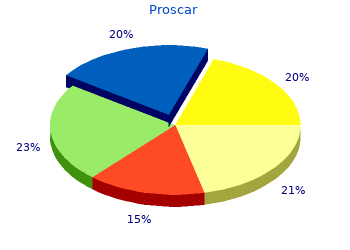
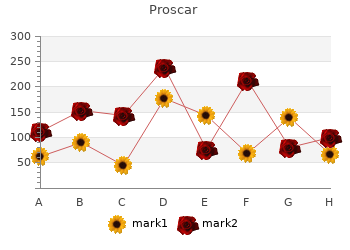
If you won’t automatically qualify the next year purchase 5 mg proscar otc, you’ll get a notice Words in (on grey paper) in the mail by early fall. If the amount of Extra Help red are you get is changing, so that your copayment amounts change for defned next year, you’ll get a notice (on orange paper) in the mail with the on pages new copayment amounts. Even if you get the notice on grey paper because you don’t automatically qualify, you may still be able to save on your Medicare drug coverage costs. Te change in Extra Help you get starts the month afer you report the change in your marital status. You can report changes in your income, resources, or family size to Social Security to review at any time. If you applied and qualifed for Extra Help through your state, your state’s rules may require you to tell them about changes in your circumstances. If you automatically qualify, you should get a purple, yellow, orange, or green notice from Medicare that you can show to your plan as proof you qualify for Extra Help (see chart on page 34). If you applied for Extra Help, you can show your plan your “Notice of Award” letter from Social Security as proof you qualify. Proof you have Medicaid and live Other proof you have Medicaid in an institution or get home- and community-based services A bill from an institution (like a A copy of your Medicaid card nursing home) or a copy of a state (if you have one) document showing Medicaid paid A copy of a state document for your stay for at least a month that shows you have Medicaid A print-out from your state’s A print-out from a state Medicaid system showing you electronic enrollment fle, or lived in the institution for at least a screen print from your state’s month Medicaid systems that shows A document from your state you have Medicaid that shows you have Medicaid Any other document from and are getting home- and your state that shows you have community-based services Medicaid Your plan must accept any of these documents as proof you qualify for Extra Help. As soon as you have given them any one of these documents, your plan must make sure you pay no more than the right amount to fll your prescriptions. Your plan must also contact Medicare so Medicare can get proof that you qualify, if it’s available. You should expect your request to take anywhere from several days to up to 2 weeks, depending on the circumstances. Your plan and Medicare will work to process your request before you run out of medication, if possible. If you paid for prescription drugs since you qualifed for Extra Help, you may be able to get back part of what you paid. If you applied for Extra Help through Social Security, they’ll give you a hearing by phone unless you choose a case review. Either way, Social Security will review those parts of the decision that you believe are wrong and will look at any new information you provide. If you want to fle an appeal, keep in mind: You have 60 days to ask for an appeal. Social Security will assume you got the letter 5 days afer the date on it, unless you show them you didn’t get it within the 5-day period. Call Social Security at 1-800-772-1213 for a list of groups that can help you with your appeal. If you apply for Extra Help with your state, your decision letter should include appeal rights and procedures. Call your State Medical Assistance (Medicaid) ofce for information on your state’s appeals process. You’ll have to pay the monthly premium, yearly deductible (some plans don’t have a deductible), and a share of the cost of your drugs. Even if you don’t qualify for Extra Help now, you can apply or reapply later if your income and resources change. Other ways to save if you don’t get Extra Help Tere are other ways you may also be able to save. Ask your doctor if there are generic, over-the-counter, or less-expensive brand-name drugs that could work just as well as the ones you’re taking now. Switching to lower-cost drugs can save you hundreds or possibly thousands of dollars a year. Exploring National- and Community-Based Programs that may have programs that can help you with your drug costs, like the National Patient Advocate Foundation or the National Organization for Rare Disorders. Get information on federal, state, and private assistance programs in your area by visiting beneftscheckup. Virgin Islands ofer some type of coverage to help people with Medicare with paying drug plan premiums and/or cost sharing. Many of the major drug manufacturers ofer assistance programs for people enrolled in a Medicare drug plan. Words in red are Medicare works with other government representatives, defned community- and faith-based groups, employers and unions, doctors, on pages pharmacies, and other people and organizations to educate people 83–86. Look for information in your local newspaper, or listen for information on the radio, about events in your community. If you have limited income and resources, you may qualify for Extra Help paying the costs of Medicare drug coverage. Before you make a decision, get answers to these questions: Do I have creditable prescription drug coverage now? Tis may be important if a plan you want to join requires you to use certain pharmacies.
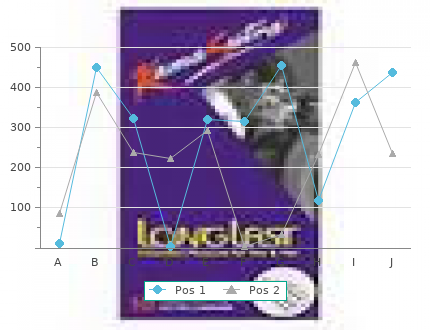
Side effects are more cation cheap 5 mg proscar otc, the systematic review group finalized evidence Table 5. For the remaining questions with sparse and in evidence) is rated as high, moderate, low, or very low indirect evidence, relevant studies are summarized after based on the domains of precision, directness, consis- each recommendation. The guideline-writing group based its recommendations on the quality of evidence, balance of benefits and harms, Treatment of Persons With Immune-Active patients’ values and preferences, and clinical context. Determinants of the Strength of a Recommendation Quality of evidence Balance of benefits and harms Patient values and preferences Resources and costs 3. Implications of the Strength of Recommendation Strong Population: Most people in this situation would want the recommended course of action and only a small proportion would not. Conditional Population: The majority of people in this situation would want the recommended course of action, but many would not. Health care workers: Be prepared to help patients make a decision that is consistent with their values using decision aids and shared decision making. Policy makers: There is a need for substantial debate and involvement of stakeholders. Evaluation for stage of disease using noninva- ease severity sive methods or liver biopsy is useful in guiding treatment decisions including duration of 5. The magnitude of the guiding treatment choices, duration of therapy, and treatment effect (40%-61% reduction in liver-related therapeutic endpoints. Among the subgroup increased stiffness and this needs to be taken into con- of persons with cirrhosis, antiviral therapy (vs. Evidence and Rationale Quality/Certainly of Evidence: Moderate The evidence profile is summarized in Supporting Strength of Recommendation: Strong Table 2. Two small, retro- unless there is a competing rationale for treatment spective cohort studies compared continued therapy to discontinuation. The rationale for discontinuing antiviral therapy is for decompensation and death, although data are based on the paucity of evidence about benefits of lifelong limited. Persons who stop antiviral therapy should be disease progression in association with virological relapse. In this context, long-term apy in persons without cirrhosis and (2) impact of stop- antiviral therapy is considered. In persons on tenofovir, renal safety measure- therapy after recovery from a hepatitis B flare with ments, including serum creatinine, phosphorus, hepatic decompensation, the cumulative incidence of urine glucose, and urine protein, should be hepatic decompensation at 1, 2, and 5 years was 8. In the absence of other risk factors for osteoporo- with cirrhosis died of hepatic decompensation. In cases of suspected tenofovir-associated renal dys- persons with treatment duration longer than 2 or more function and/or osteoporosis/osteomalacia, tenofo- years. Nonetheless, these mia is the proposed mechanism for osteomalacia/osteo- reports of renal dysfunction in tenofovir-treated persons porosis. Another report from “real-life” cohorts identi- Large, population-based studies with longer treatment fied a need for dose adjustment in 4% of persons for duration comparing nucleoside and nucleotide analogs 73 renal causes over an approximately 2-year period. Food and Drug Administration associated with long-term therapy, in addition to studies black box warning for lactic acidosis. However, treatment add a second antiviral drug that lacks cross- duration was relatively brief in both studies ( 48 resistance. In the remaining 11 cohort studies, eight Quality/Certainty of Evidence: Very Low showed no difference in serum creatinine and/or creati- Strength of Recommendation: Conditional nine clearance between the two treatment options. Only one study showed a difference in abnormal Technical Remarks proximal tubular handling of phosphate for tenofovir versus entecavir (48. Counseling patients about medication adherence a difference in bone mineral density in 42 tenofovir- is important, especially in those with persistent and 44 entecavir-treated adults with an average treat- viremia on antiviral therapy. Antiviral Options for Management of Antiviral Resistance Add Strategy: Antiviral Resistance Switch Strategy 2 Drugs Without Cross-Resistance Ref(s) Lamivudine-resistance Tenofovir Continue lamivudine; add tenofovir 90 (or alternative emtricitabine-tenofovir) Telbivudine-resistance Tenofovir Continue telbivudine; add tenofovir — Adefovir-resistance Entecavir Continue adefovir; add entecavir 91 Entecavir-resistance Tenofovir Continue entecavir; add tenofovir 92,93 (or alternative emtricitabine-tenofovir) Multi-drug resistance Tenofovir Combined tenofovir and entecavir 92,94 2. This time point was defined by outcomes rants a switch to another antiviral monotherapy of virological response in clinical trials and reflects with high genetic barrier to resistance or the addi- an era of antiviral therapy with drugs of lower tion of a second antiviral with a complementary antiviral potency and higher rates of resistance. For those switching to another drug in lieu of continuing treated with tenofovir, viral suppression rates were 76% monotherapy. For persons on therapy who fail to Medical providers should ensure patient adherence to therapy. Con- additional high-potency antiviral therapy to an existing firmatory testing should be obtained before mak- monotherapy versus switching to another high-potency ing a therapy change. Resistance testing may assist antiviral monotherapy versus continuing monotherapy with decisions regarding subsequent therapy. In contrast, virological break- 98,99 confirmed virological breakthrough constitutes a through on antiviral treatment is typically associated 100 rationale for switching to another antiviral mono- with viral resistance and warrants a change of therapy. There is insufficient There was no evidence of harm owing to continued long-term comparative evidence to advocate one monotherapy among persons with persistent low-level approach over another. Based upon virological viremia, though the quality of evidence was low regard- principles, the risk of viral resistance is predicted ing the clinical outcomes of persons with persistent low- to be lower with combination antiviral therapy level viremia who continued entecavir or tenofovir compared to monotherapy. Current evidence does not provide an optimal entecavir, the rate of viral suppression at week 48 was length of treatment. In another randomized study of 102 persons with adefovir resistance treated with tenofovir alone or viral rebound that could lead to decompensation.
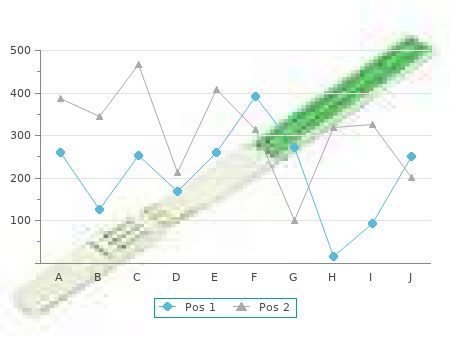
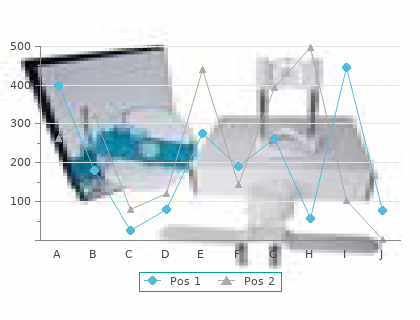
Spain were based on treaties with different wordings but came to the same conclusion: the 18-months waiting period was disregarded and the tribunal had jurisdiction generic proscar 5mg with amex. As referred above, certain public policy limitations, taken by the parties to the agreement, were 34 taken into account. Moreover, a distinction was made between “the legitimate extension of rights and benefits by means of the operation of the clause, on the one hand, and disruptive treaty shopping that would play havoc with the policy objectives of underlying specific 35 treaty provisions, on the other hand. Argentina rejected the argument that the 18-months 37 waiting period was a “public policy rule” whereas the tribunal in National Grid v. Argentina, the claimant sought to override the requirement arguing that it did not involve jurisdiction, consent or any “public policy” provision. However, the tribunal then went on to qualify this argument that the issue at stake did not relate to consent or jurisdiction as “plainly erroneous”. In doing so it gave particular weight to the “consent” as the founding principle upon which jurisdiction is formed: “Besides, it is a general principle of international law that international courts and tribunals can exercise jurisdiction over a State only with its consent. The principle is often described as a corollary to the sovereignty and independence of the State. A presumed consent is not regarded as sufficient, because any restriction upon the independence of a State (not agreed to) cannot be presumed by courts. While reviewing the early cases relating to the issue, the tribunal dismissed any analogy with Ambiatelos. Lastly, the Claimants had not cited any practice in Jordan or Italy in 46 support of their claims. However, the tribunal did not accept the arguments advanced by the claimant, although these arguments had been decisive in those cases dealing with the 18-months requirement (see above). The tribunal relied on an established principle, “both in domestic and international law”, that an agreement to arbitrate should be “clear and unambiguous”, and consequently stated that the parties’ clear and unambiguous intention could not be identified if the agreement to arbitrate was to be reached through incorporation by reference. The Tribunal is inclined to agree with the Claimant that in this particular case, a choice is better than no choice. It made reference to the risks of an uncontained “treaty shopping”: “… It is one thing to add to the treatment provided in one treaty more favorable treatment provided elsewhere. It is quite another thing to replace a procedure specifically negotiated by parties 49 with an entirely different mechanism. Such a chaotic situation—actually counterproductive to harmonization—cannot be the presumed 50 intent of Contracting Parties. Having rejected the claim, the tribunal “wholeheartedly” endorsed the statement of principle made by the tribunal in Plama v. Bulgaria case in the sense that an “agreement to arbitrate should not be reached by incorporation by reference”. For the reasons developed above, it should be evident that this Tribunal cannot accept that standpoint. It saw it as merely generic and of little or no guidance as to determine the intention of the parties to the treaty. Although the defending State had recalled that “every single tribunal that has considered the question of expanding international tribunals’ jurisdiction on the basis of a most-favoured- nation clause has rejected the Claimant’s position […]”. Quite the contrary, it could be argued that, if it applies to substantive protection, then it should apply even more to ‘only’ procedural protection. It also rejected the “invidious” proposition, as some commentators have called it, to assume that investment tribunals were superior to domestic courts and that therefore investors seeking to have their claim assessed by a neutral international forum was based on a rational concern. The tribunal asserted that there was no textual basis or legal rule to say that treatment does not encompass the host State’s acceptance of international arbitration. Examining these arguments lead to a decision by the tribunal in favour of the investor. The discussion then turned to the question whether dispute settlement was an inherent part of the “fair and equitable treatment” standard. This in the majority view relates to normative standards and does not extend to either (i) availability of international as opposed to national fora or (ii) “more” rather than “less” arbitration”(as the separate opinion 68 puts it). To counter these arguments and preserve the integrity of the basic treaty, defendants have argued that the intent of the parties can be deducted from reasonable interpretation and that there is a need for a clear and unambiguous consent. They also claimed that there is no evidence of "less favourable" treatment enshrined in the basic treaty as opposed to a third treaty. Spain, Siemens, Allowed, except months waiting period Gas Natural, Camuzzi, Suez, for Wintershall before local courts National Grid, Wintershall v. Czech Republic Allowed of compensation for expropriation Compare treatment Bayindir v. This footnote would be deleted in the final text of the Agreement: “The Parties note the recent decision of the arbitral tribunal in the Maffezini (Arg. Kingdom of Spain, which found an unusually broad most favored nation clause in an Argentina- Spain agreement to encompass international dispute resolution procedures. By contrast, the Most-Favored-Nation Article of this Agreement is expressly limited in its scope to matters “with respect to the establishment, acquisition, expansion, management, conduct, operation, and sale or other disposition of investments.
9 of 10 - Review by T. Grompel
Votes: 126 votes
Total customer reviews: 126

